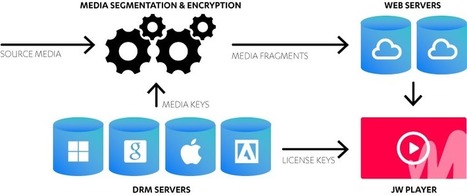With the recent announcements from Apple/Netflix and Mozilla, all modern desktop browsers will soon support the proposed HTML Encrypted Media Extensions (EME) standard. EME provides a standardized approach for playing encrypted content in HTML5. One application of encrypted video is the enforcement of Digital Rights Management (DRM) on paid video content. Many content owners (film studios, sports leagues, etc.) mandate using DRM to distribute their content online.
What does all of this alphabet soup mean for users? In short, the EME standard enables publishers to deliver premium video to browsers without the need for plugins. To date, doing DRM in the browser requires the Adobe Flash, Microsoft Silverlight or Google Widevine plugins. These plugins use non-interoperable file formats, protocols and DRM key systems, creating fragmentation. EME solves (most of) these issues, enabling premium video in HTML5 using a single file format and streaming protocol.



 Your new post is loading...
Your new post is loading...









